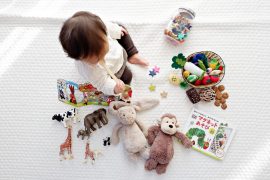While it may seem strange not to give your baby water until about 6 months of age, there is scientific evidence to support this practice.
According to the World Health Organization (WHO), a Trusted Source, breastfed babies do not need extra water because breast milk is more than 80% water and provides all of your baby’s fluid needs. Infants who are breastfed stay hydrated with the help of breast milk.
Why cannot you give your baby water until he is 6 months old?
Water can cause diarrhea and even malnutrition in infants younger than six months. Introducing water to a breastfed baby may cause the baby to breastfeed less or not at all, which can lead to malnutrition. Breastfeeding less often can decrease the amount of breast milk.
Should you give your nursing baby water when it’s hot outside?
Even if it is a hot day and/or you live in a hot climate, your baby does not need water until he or she is 6 months old. Breast milk or formula are the best options for keeping your baby hydrated.
How much water does a baby need?
According to general guidelines, most babies should drink between two and eight ounces of water per day. This amount is in addition to the water your baby receives with formula or breast milk. If you allow your baby to drink water from his cup throughout the day, he will likely get all the nutrients he needs.
In general, it is safe to let your baby drink as much water as he wants once, he is six months old or older. While still receiving breast milk or formula, he or she will likely be transitioned to solid foods. When solid foods are introduced, it is necessary to drink a little more water to stay hydrated.
Many pediatricians recommend drinking four glasses of water a day from about age one. This is because your baby will become increasingly dependent on solid foods, which will require increased water intake.
Is it necessary to boil tap water for babies?
Some types of tap water may not be safe for your child to drink. If you are concerned about the quality of tap water in your home, contact your local health department.
If tap water is not safe, you can use bottled water instead or boil it to mix with baby food or give to your baby once he or she is over six months old.
Bring cold water to a boil for one minute to boil tap water. Then let it cool to room temperature for 30 minutes before using it. Before giving the water to your baby, test it on your wrist to make sure it is room temperature.
Dehydration symptoms in infants.
If you are concerned that your child is not drinking enough fluids because he or she is unwell or because it is extremely hot outside, watch for these signs of dehydration in infants:
- Dark yellow urine
- Fewer than six wet diapers in 24 hours
- Tearless crying (crying with few or no tears)
- Cracked lips
- Listlessness
- Dry skin that doesn’t bounce back when gently pressed
- Unusual sleepiness
- Extreme fussiness
- Sunken fontanelle (the “soft spot” on the top of her head)
- Sunken eyes
- Cold hands and feet
Contaminants in water pose a greater threat to infants.
Nitrate
High levels of nitrates can cause methemoglobinemia by interfering with oxygen transport in the blood (also known as blue baby syndrome). Methemoglobinemia is a blood disorder in which the skin turns blue and can lead to serious illness or death. Methemoglobinemia most commonly occurs in infants who are bottle-fed and younger than six months. When nitrate levels in water exceed ten milligrams per liter (mg/L) or ten parts per million, it can be harmful (ppm). Nitrogen is used to calculate the nitrate content.
Lead
The brain, kidneys, and nervous system are all susceptible to lead poisoning. Children’s development can be slowed by lead, as can learning, behavioral, and hearing problems. Lead poisoning is most dangerous for babies, children under six, and pregnant women. Any amount of lead is dangerous.
Manganese
Problems with memory, attention, and motor skills may be exacerbated by high levels of manganese. In addition, it can cause learning and behavioral problems in infants and children. When manganese levels in water exceed 100 micrograms per liter (g/L) or 100 parts per billion, it can be harmful (ppb).
Arsenic
High levels of arsenic have been associated with decreased intelligence in children and increased risk of bladder, lung, and liver cancers. Diabetes, heart disease, and skin disease are all associated with arsenic. Arsenic can be harmful in any amount. The MDH strongly advises treating water containing more than 10 g/L of arsenic or finding another source of water.
Fluoride
Caries can be prevented with the right amount of fluoride. Your baby’s doctor or dentist can help you make sure your child is getting the right amount. To protect teeth, drinking water should have a fluoride content of 0.7 mg/L or 0.7 ppm.
Final Though
Waterdrop was founded in 2015 with the goal of providing reliable water treatment solutions to address these issues. The company’s mission is to provide high-quality products that truly treat people’s drinking water around the world. The name Waterdrop is derived from the desire to provide clean, safe and nutritious drinking water – from the first sip to the last delicious drop.
